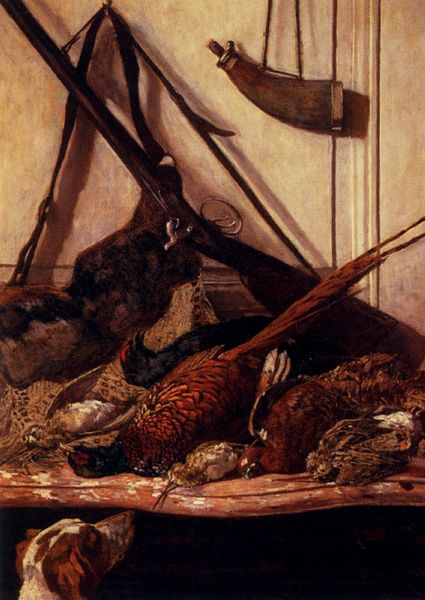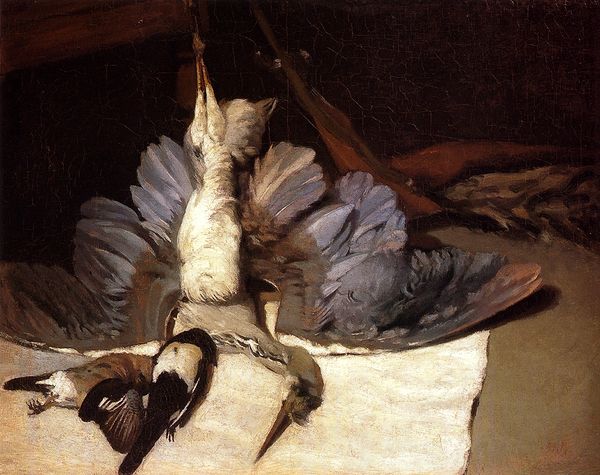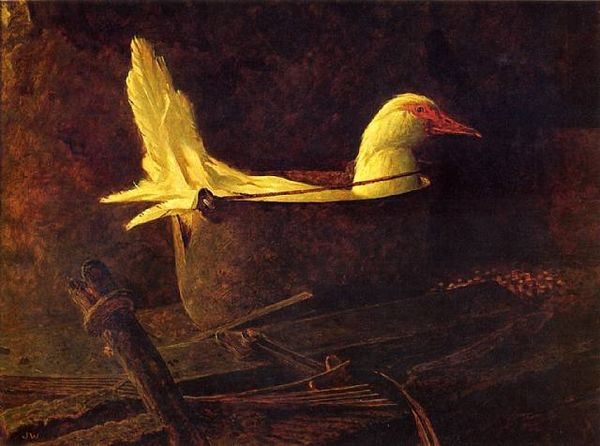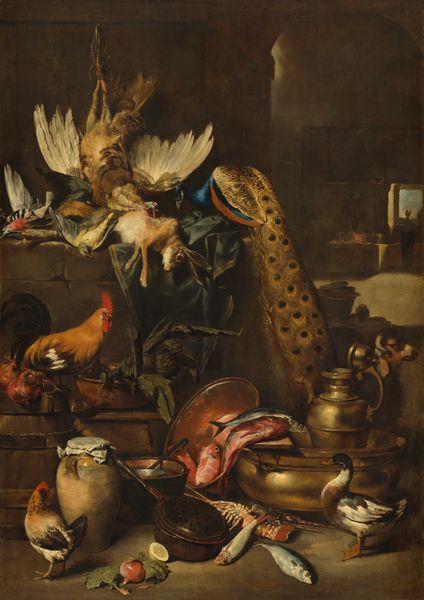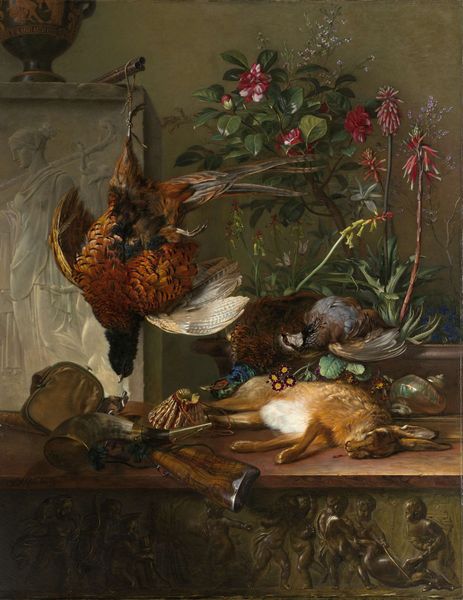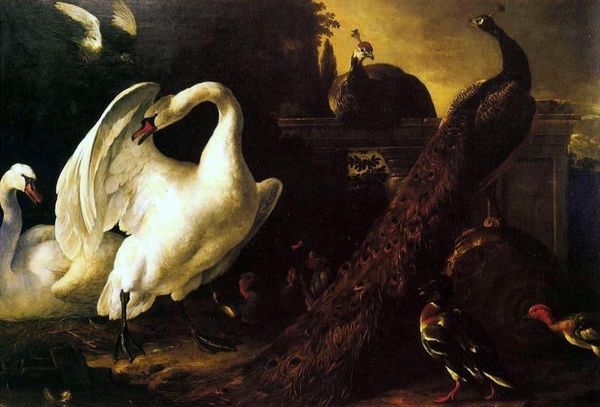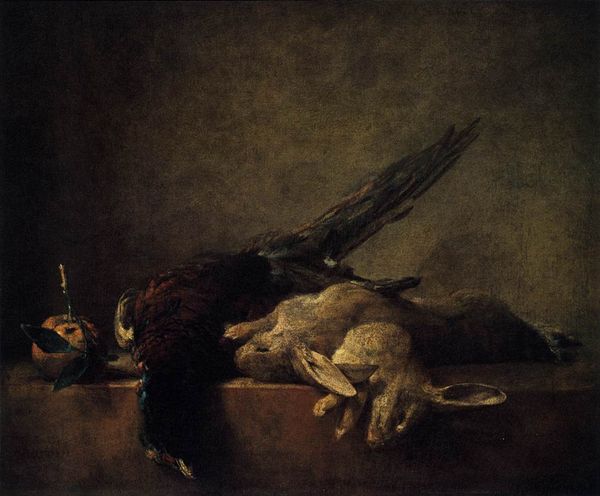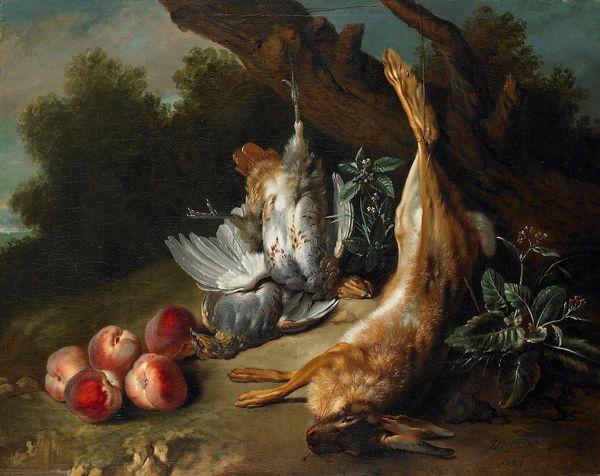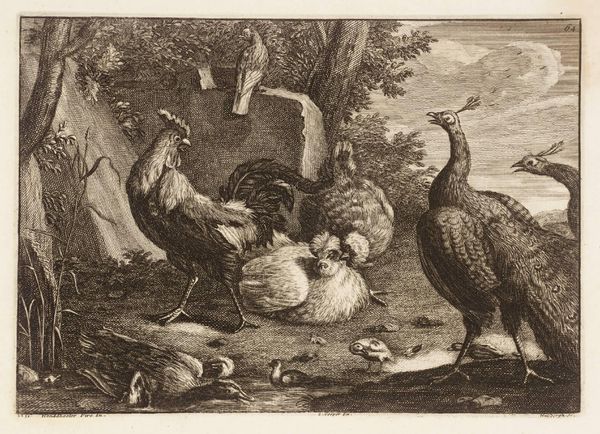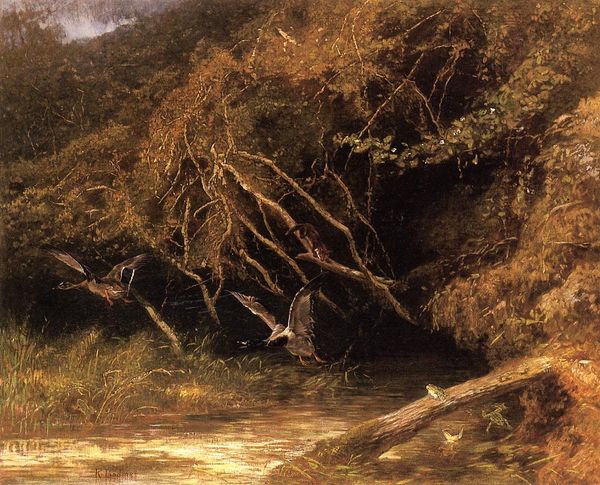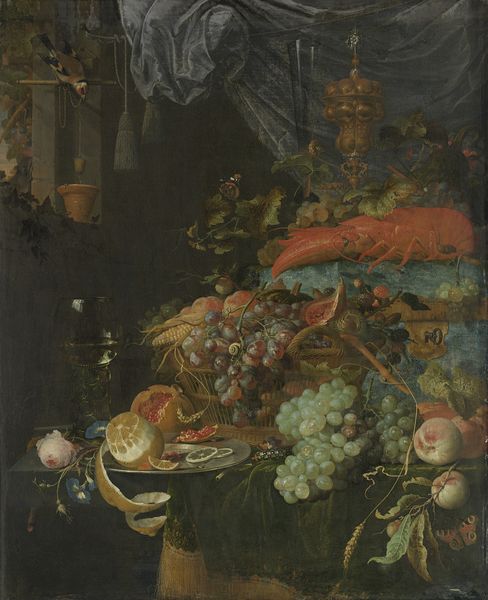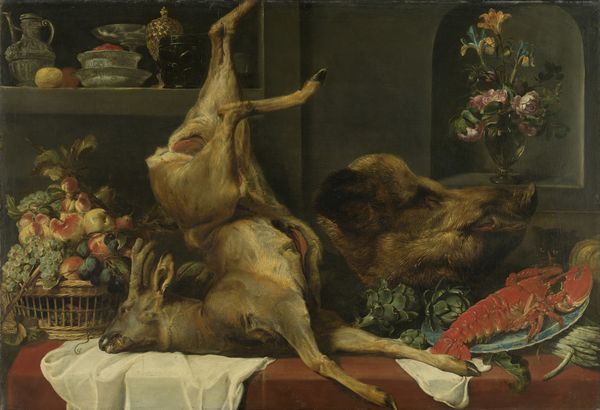
The Festival of St. Swithin or The Dovecote 1875
0:00
0:00
williamholmanhunt
Ashmolean Museum, Oxford, UK
Dimensions: 91 x 73 cm
Copyright: Public domain
Curator: What a wonderfully domestic scene, steeped in the rich hues of nature! The work before us is "The Festival of St. Swithin or The Dovecote," painted in 1875 by William Holman Hunt. Editor: Yes, immediately I am struck by how still it all is. Like a quiet moment captured in a world that’s moving too fast, too chaotic. The muted palette gives a sense of peaceful contemplation, doesn't it? Curator: Absolutely. Note how Hunt expertly renders the intricate details of the dovecote itself – the play of light on its roof, the textures of the wood. The structure serves as the painting’s geometric armature, directing the eye through its precise composition. Editor: And what of the title, connecting it to St. Swithin’s Day? This links the painting to broader discussions of religion, the English countryside, and perhaps, anxiety surrounding agricultural traditions impacted by burgeoning industrialization. Are the doves stand-ins for simpler ways of being? Curator: A compelling interpretation. Certainly, one can see the doves not merely as elements within the visual field but also as symbolic carriers of broader societal narratives. Editor: Furthermore, consider that this was created during a period of intense social reform and Victorian idealism. What do you make of its implied critique, or endorsement, of these evolving societal mores? Does the comfort implied in domesticity deflect deeper turmoil? Curator: Interesting, and from a purely formalist perspective, the painting is a marvel of perspective and realism within its stylistic tradition. But, yes, considering the historical context brings additional layers to appreciate the subject, allowing us to perceive the possible symbolic nature and hidden meanings within its composition. Editor: Precisely. The setting and figures – here the doves – are not merely observed, they are products and reflections of distinct moments in a socio-political landscape. The stillness evokes questions about disruption, preservation, and the construction of idyllic representations of English identity. Curator: A nuanced reading that beautifully situates this beautiful artwork, one crafted with careful attention to detail and perspective. Editor: Exactly, helping us to reconsider our role as interpreters. What appears quaint belies powerful commentary that, perhaps, remains very resonant today.
Comments
No comments
Be the first to comment and join the conversation on the ultimate creative platform.
